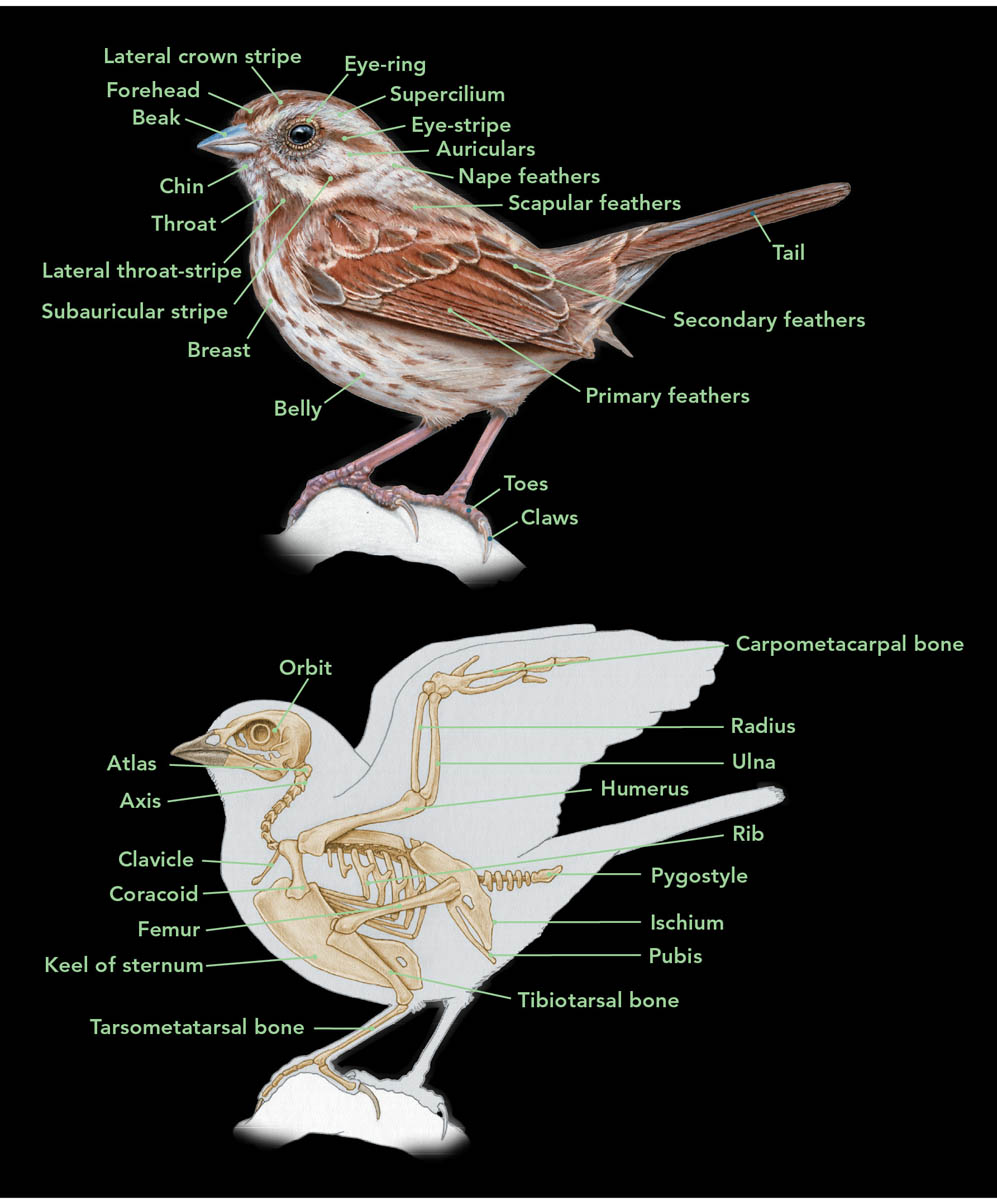
albumen. Egg white
allopreening. Mutual preening
altricial. Describes chicks that hatch with sparse or no feathers, closed eyes, and no ability to leave the nest for at least a week or two
billing. Gently touching and grasping a mate’s bill
brancher. An owlet that leaves the nest and clambers along a branch before it is able to fly
brood patch, incubation patch. A bare patch of skin on a nesting parent’s belly that allows transfer of body heat to eggs or chicks
broody. Describes a parent bird’s instinct to incubate eggs
cache. To store food
call. A vocalization used year-round to maintain contact with the flock, give an alarm, or communicate within the nest, as distinct from the seasonal song, used for courtship and establishing territory
cloaca. The external opening of the oviduct
clutch. The total number of eggs laid in one nesting stint
cryptic. Colored for camouflage
determinate layer. A female that will produce a certain number of eggs and stop, even if one egg is removed
display. A behavior, characteristic of a species, used particularly by male birds in courtship or defense
egg tooth. A sharp point that develops on a chick’s beak while it is still inside the egg, used to break through (pip) the shell from the inside
feather tract. Row of follicles from which feathers will grow
fecal sac. The feces of a hatchling, enclosed in a tiny bundle easy for the parent to remove
fledging. The act of leaving the nest. Usually refers to altricial nestlings, when their eyes are open and they can hop or flit about. Also used to describe the time at which the young bird has finished acquiring its first full set of flight feathers, even though it may not yet be able to fly.
gape. The brightly colored interior of a songbird chick’s mouth
gular pouch. A throat sac that may be used for storing food while flying
heronry. A communal nesting area for herons
imprint. A hatchling’s instinctive memorization of its parent’s features
incubation patch. See brood patch
indeterminate layer. A female that continues laying, replacing any eggs removed from her nest
irruptive. Unpredictable in migratory behavior
mobbing. Grouping together to attack a predator
molt. To shed and replace feathers, usually seasonally
neotropical migrants. Birds that winter in American tropics and breed in North America
nuptial plumes. Specialized feathers displayed during courtship
obligate brood parasite. A bird that lays her eggs in another bird’s nest rather than building her own
oviduct. The passageway the egg follows from the ovary to the outside of the body
pinfeathers. Newly emerged feathers that are still enclosed in sheaths
pip. To break a small hole in the shell of the egg, from the inside out
polygynous. Describes a male simultaneously paired to more than one female
precocial. Describes chicks that hatch covered with down, with eyes open, able to follow their parents away from the nest
semi-precocial. Describes chicks that hatch covered with down and with open eyes, but not as mobile and independent as precocial chicks
shaft. A feather’s thick central stem
sky dance. An aerial courtship display
song. A vocalization used seasonally, primarily by male birds, for courtship and establishing territory, as distinct from the year-round call
squab. A baby pigeon or dove
talons. A raptor’s feet, used for grasping
